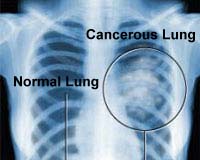 |
Moffett Field CA (SPX) Oct 29, 2010 When Discovery launches into orbit for its final flight and mission to the International Space Station, currently scheduled for Monday, Nov. 1, 2010, it will carry a six-member astronaut crew, critical spare parts, and 16 mice that will play an important role in immune system research. Discovery's target liftoff is at 1:40 p.m. PDT, and it is the 35th shuttle mission to the station. "The goal of our experiment is to discover what triggers and leads to an increased susceptibility to an infection," said Roberto Garofalo, principal investigator of the Mouse Immunology-2 (MI2) experiment and a professor in the Department of Pediatrics at the University of Texas Medical Branch at Galveston. "We can use our findings to help treat and prevent future astronauts from getting sick, as well as protect people with more vulnerable immune systems here on Earth, such as the elderly or young children." Research has shown that the immune system is compromised during and after spaceflight. In order to better understand why the body's mechanisms to fight off infection are weakened, scientists will fly 16 mice into space for Discovery's 11-day mission. After they return to Earth and pass a medical examination, scientists will expose them to a respiratory syncytial virus (RSV). Worldwide, the virus is a leading lower respiratory tract illness in infants and children and also is now recognized as a significant cause of respiratory illness in older adults. Most people who are otherwise healthy recover from an RSV infection in a couple weeks, while young children, the elderly and those with compromised immune systems, could have severe symptoms that require hospitalization and treatment. At various times after exposure to the virus, Garofalo's team will collect cells from the mice's lung and nasal tissues and study the cells' genes and proteins to learn how the animals' bodies responded to the virus. Tissues from the mice that flew in space will be compared with the tissues of mice that never left Earth, but also were exposed to the virus. In the weeks leading up to launch, project teams from NASA's Ames Research Center, Moffett Field, Calif., and the University of Texas Medical Branch at Galveston prepared the MI2 experiment for flight at NASA's Kennedy Space Center, Florida. A few hours before launch, the mice will be placed into the Ames-developed Animal Enclosure Modules, habitats in the shuttle's middeck lockers, where they will remain during flight. "Once in orbit, astronauts will perform daily checks on the health and well-being of the mice," said Nicki Rayl, project manager for the MI2 experiment at Ames. "STS-133 is the 25th flight of this unique hardware, which was designed to provide them with plenty of food and water, keep them healthy during launch, flight and return to Earth." The Mouse Immunology-2 experiment is managed by the International Space Station Research Project Office at Ames along with Garofolo's team at the University of Texas Medical Branch at Galveston. The Ames Flight Systems Implementation Branch and Space Biosciences Division developed and implemented the MI2 payload, which was funded by the Advanced Capabilities Division in the Exploration Systems Mission Directorate at NASAs Headquarters, Washington. The first Mouse Immunology experiment flew aboard STS-131 in April 2010 to study the influence of microgravity on mouse immune systems. The experiment's principal investigator, Millie Hughes-Fulford, former NASA astronaut and professor in the Departments of Medicine and Urology at the University of California, San Francisco studied the immune system's response to a new infection or re-infection during spaceflight. Garofalos experiment is complementary to the STS-131 immunology experiment but will focus specifically on how the immune system responds to an infection following spaceflight.
Share This Article With Planet Earth
Related Links University of Texas Medical Branch at Galveston Space Biosciences Division at NASA Ames Science on the International Space Station Hospital and Medical News at InternDaily.com
 Cheek Swab May Detect Lung Cancer
Cheek Swab May Detect Lung CancerArlington, VA (SPX) Oct 13, 2010 Early detection is critical for improving cancer survival rates. Yet, one of the deadliest cancers in the United States, lung cancer, is notoriously difficult to detect in its early stages. Now, researchers have developed a method to detect lung cancer by merely shining diffuse light on cells swabbed from patients' cheeks. In a new clinical study, the analysis technique--called parti ... read more |
|
| The content herein, unless otherwise known to be public domain, are Copyright 1995-2010 - SpaceDaily. AFP and UPI Wire Stories are copyright Agence France-Presse and United Press International. ESA Portal Reports are copyright European Space Agency. All NASA sourced material is public domain. Additional copyrights may apply in whole or part to other bona fide parties. Advertising does not imply endorsement,agreement or approval of any opinions, statements or information provided by SpaceDaily on any Web page published or hosted by SpaceDaily. Privacy Statement |